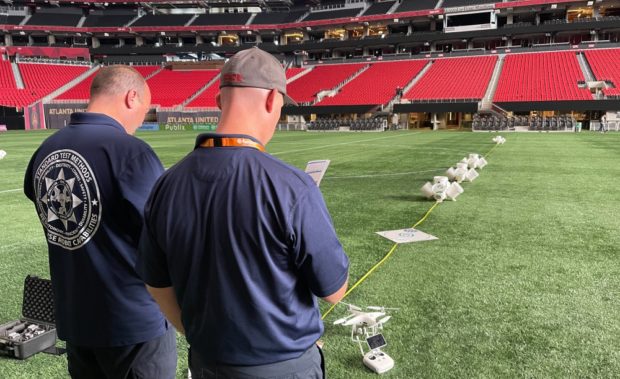The Airborne Public Safety Association (APSA), a 501(c)3 non-profit organization with over 50 years of experience supporting public safety aviation, and the Airborne International Response Team (AIRT), a 501(c)3 non-profit organization supporting the use of drones and robotic systems for public safety and disaster response, have entered into an agreement of cooperation to support the implementation of the National Institute for Standards and Technology (NIST) Test Methods for Small Unmanned Aircraft Systems (sUAS) to enhance safety and remote pilot proficiency surrounding public safety drone operations.
Under the agreement, APSA and AIRT – the official home of the DRONERESPONDERS program – will cooperate to facilitate validation and dissemination of the NIST test methods for sUAS. This will include developing best practices for using the tests to support training with standard measures of remote pilot proficiency for public safety and emergency services organization operating drones for life safety missions.
“The NIST test methods for sUAS have emerged as a proven system for evaluating both remote pilot proficiency and aircraft capabilities,” said Daniel Schwarzbach, Executive Director and CEO, APSA. “Our partnership with AIRT and the DRONERESPONDERS program will help expand awareness and adoption of the NIST test methods while also ensuring a safer National Airspace System (NAS).”
APSA is already offering basic and advanced-level proctor training courses for public safety agencies looking to adopt the NIST test methods for sUAS, as well as a Basic Proficiency Evaluation for Remote Pilots (BPERP) certification. The DRONERESPONDERS program, in-part through a grant from NIST, will help validate and disseminate the test methods while supporting the courses. They will also maintain a record of public safety agencies and personnel who have successfully completed the training.
“We look forward to working alongside APSA to help establish much-needed standardization surrounding public safety and emergency drone operations,” said Chief Charles Werner (ret.), Director, DRONERESPONDERS. “The skill development and objective measures of proficiency provided by the NIST test methods are ideal for law enforcement, fire service, and other public safety agencies who are typically operating small, quad-copter drones.”
The NIST test methods for sUAS provide a scalable, flexible, and reproductible way to train and measure remote pilot proficiency for both professional and recreational pilots, while also reducing risk to ground personnel and manned aircraft operating in the NAS. NIST test lanes can be fabricated easily from supplies typically found at most hardware stores. APSA and AIRT will begin aggregating the average scores for remote pilots on various aircraft within the NIST test methods to enable any organization using similar aircraft to establish their own minimum thresholds of proficiency.
“We are excited to have APSA and DRONERESPONDERS work together to introduce the NIST test methods for sUAS to America’s first responders operating drones,” said Adam Jacoff, a robotics research engineer in NIST’s Intelligent Systems Division who is leading an international effort to develop standard tests for remotely operated aerial, ground, and aquatic systems. “Their efforts will help make public safety drone operations more effective, and safer, for all stakeholders.”
Photo: FAA-certified remote pilots from the New York City Fire Department (FDNY) operate a small drone during NIST Standard Test Methods for sUAS training inside Mercedes-Benz Stadium during AUVSI XPONENTIAL 2021.Photo by AIRT.
Source: Press Release

